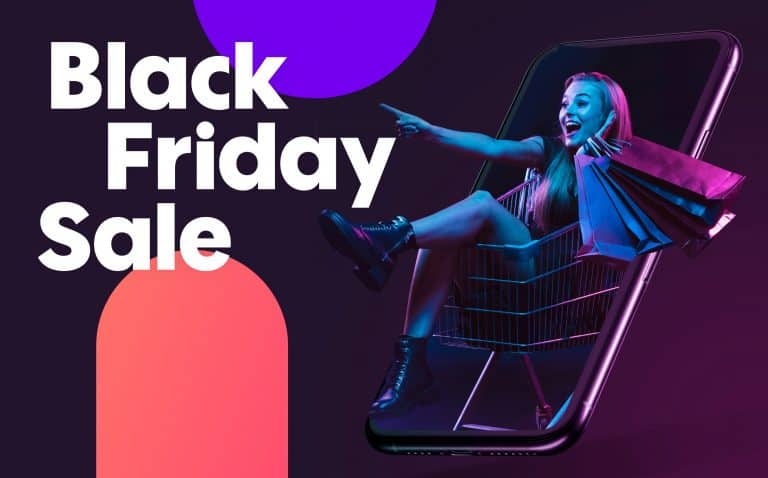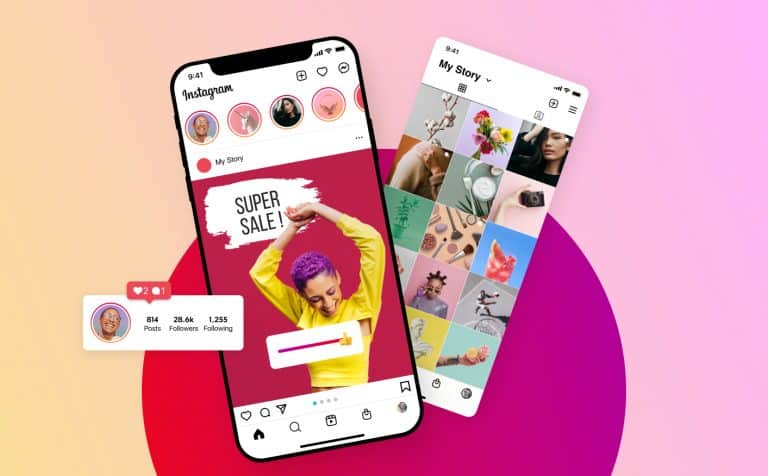
How To Skyrocket Your Business In 2019
With 2018 winding down to the final few days, our attention must turn towards 2019. As you know, marketing never sleeps and it’s time to start planning for the future. If you’re looking to take your business even further in the coming year (duh, of course, you are!), a lot will depend on how you approach your marketing strategy in 2019.
Let’s examine a few ways in which you can harness your marketing power in 2019 and really skyrocket your business. We’ll take a look at emerging trends including the increased use of video marketing in the online world, quotes from influencers, statistics, and more.
Ready to skyrocket your business in 2019? Strap in and let’s blast off.
The Changing World of Marketing
One of the key changes to marketing that was ushered in by the evolution of the internet is the focus on content marketing. In the present marketing environment, those who would seek their audience and customers on the internet would be wise to keep something in mind. Content marketing is replacing “marketing” as the dominant strategy for attracting customers and generating sales.
Best-selling author and former dotcom executive Seth Godin has been quoted as saying “Content marketing is the only marketing left.” We would tend to agree (and not just because it’s a content marketer behind the screen).
Emerging Trends in Content Marketing
As content marketing takes hold, there are a few things to keep in mind as you look to skyrocket your business in 2019 as well as beyond. The first is the increased prevalence of the use of video in content marketing strategies.
Video marketing has increased exponentially over the last few years and by 2020 it is estimated that 80% of ALL online consumer traffic will be video related. Adding to this trend? A swell of small and medium-sized businesses adopting the practice – as they most certainly should.
76.5% of marketers and small business owners report seeing results from advertising with video. Why? Because a majority of consumers indicate they pay more attention when watching a video than reading text alone. In fact, retention from consuming video outpaces all other forms of online content. Retention from watching a video hovers around 95% while text-based communication languishes at 10%. That doesn’t mean you don’t need to learn how to add text to a video. The inclusion of text in a video will ensure you grab the attention of even those who have their devices muted.
With the increased focus being placed on video by businesses of all sizes, robust solutions are available to help conquer your video marketing strategy going forward. Not a moment too soon either. As identified by Forbes, content strategy will become an essential part of your success in 2019 and beyond, and we don’t use the word essential lightly.
Defining Your Marketing Strategy
If you fail to plan, you plan to fail. Yup, we said it. Marketing in the online world can be a full-time job, even for small businesses. Simply put, the internet and social media, in particular, have fundamentally altered the marketing landscape. There are now more opportunities than ever for small and medium-sized businesses to be successful and competitive. However, there are also more challenges.
Defining, planning, and executing your marketing strategy going forward is essential to putting your business in the best possible position to be successful. The use of video marketing is not only a trend worthy of consideration, but it’s also a growing movement that requires attention. Otherwise, you run the risk of being left behind.
Making The Most of Video Marketing
More businesses are adopting video marketing and making it a crucial part of their overall strategy. This means creating weekly video content while emasuring it’s success and improving upon the creatives and distribution.
While video marketing can be used in a variety of ways, the most obvious place is on social media. “Social media sites and video go hand-in-hand, and most sites encourage video posting and sharing. The viral video opportunities are endless when you use the right strategies to create and post your videos online.” – Amy Porterfield, Social Media Examiner
Since social media is the primary area of focus for many businesses, let’s examine the top social media channels and discuss how best to integrate them into your video marketing. In most cases, you will be able to post the same content to all channels while simply varying the captions. This allows you to broaden your marketing coverage and appeal to a wider audience. At the same time, keep in mind that different platforms may have different formatting restrictions so remember to observe all guidelines and best practices for each.
Facebook is likely the first place people think of when imagining where to use their video marketing content. And for good reason. Facebook boasts over 1 billion active users each day and most of those users are consuming video content.
47% of users say they consume most of their visual content on Facebook compared to 41% reporting YouTube. That may be hard to imagine considering many of us think of YouTube as the place for video. However, Facebook’s organic newsfeed, as well as paid ad opportunities, help it to stand out.
Businesses and brands should be devoting a healthy amount of their video marketing efforts to Facebook. In general, Facebook is a great tool for building brand awareness and engaging with customers. With the added ability to easily post native videos and run video ads, Facebook is second to none.
Facebook’s ad targeting feature is also the most comprehensive of any social platform. When running video ads, you can specifically target your ideal customer by location, age, interests, and more.
The addition of Facebook Premieres, a new service which allows pre-recorded video to be presented in a format similar to Live videos, only increases the opportunities for businesses to engage with fans and use their video content in new and exciting ways.
LinkedIn is often thought of as a younger sibling to some of the larger social media platforms. However, for businesses who operate in the B2B space, it may as well be the only one. No other social media site allows for B2B networking quite like LinkedIn does.
Recently, LinkedIn revamped their advertising and sponsored content formats. Now, it’s easier than ever for brands to post their video content directly to LinkedIn and share via sponsored content.
LinkedIn may remain a secondary consideration for brands which do not operate in the B2B space. However, brands which do operate heavily in this area would be wise to treat LinkedIn the way B2C brands treat Facebook; as the place to be considering that 61 million LinkedIn users are senior-level influencers and 40 million are in decision-making positions. For B2B companies, these are the people you want to reach and LinkedIn is where to reach them.
YouTube
Even if Facebook is “beating” YouTube in terms of where more people are consuming their video content, YouTube is no slouch. YouTube is not only a great place for your videos to be seen, but it’s also a great place for your videos to live.
By uploading your content to YouTube, you have a free, easy place to host your videos. From YouTube, videos can be easily shared to social media sites, emails, or even your website. By hosting them on YouTube, you can free up space elsewhere.
Additionally, YouTube allows you to embed links to your website or social pages in the description box which also aids in enhancing your SEO. YouTube allows you to use your video content to advertise on other YouTube channels.
There’s simply no reason not to include YouTube as part of your video marketing strategy.
Instagram is owned by Facebook so many of the great ad targeting benefits which Facebook offers are also available to Instagram. However, unlike Facebook, Instagram is a media-oriented platform which focuses heavily on its mobile interface. In fact, there is no desktop version of Instagram so keep in mind your content needs to be oriented for mobile viewing.
Instagram Stories, as well as the new IGTV feature, are very video-friendly features which may work perfectly for your content. At the same time, ads can be displayed during Instagram stories which are one of the more popular features of the platform.
Yeah, but isn’t Instagram for people posting their workout and vacation pictures? Sure, but even so, 80% of Instagram users follow a business on Instagram. At the same time, at least 30% of Instagram users have purchased a product they first learned about through Instagram.
Instagram should be an essential part of your video marketing strategy in 2019. Their ad targeting is not as robust as Facebook’s, but a close second. Keep in mind the mobile-first approach with your video and orient your content for a vertical, mobile viewing audience.
Introducing Google Carousel
Google carousel is a new feature which categorizes video results in Google searches. In the past, video results were lumped in with the rest of the search results. Perhaps as a result of the rising trend in video consumption, Google has changed how they view and present video results.
Google carousel is a feature which presents the top video results related to a Google search in a rotating carousel. Showcasing the top video results separate and apart from other organic results.
Many of these videos are likely to be YouTube videos which only increases the need for your business to maintain a well-populated YouTube channel. This also enables the top video results to be displayed above other top organic results; meaning your video may creep onto the top page of Google’s results more easily now than in the past. This is helpful since 75% of people never scroll past the first page of search engine results.
Blogging With Video
YouTube isn’t the only place for video. It isn’t the only place Google carousel will look either. Your company blog is a great place to showcase video content which enhances the focus of your written content.
At the same time, Google may pick up on these pages and feature them in Google carousel results. This may be more helpful than YouTube because if users click on your video, they’ll be taken directly to your website.
“Including videos on text-based content makes the content look more comprehensive, and this aspect makes it more appealing to readers, which increases the probability of having the content shared.” – Jason Acidre, Brainshark.com
Blogging also offers inspiration for your next piece of video content. Many small and medium-sized businesses struggle with producing video content. The question is always “what should my next video focus on?” The answer may be to look no further than the pages of your company blog.
Examine the pieces you’ve written in the past and pull out important points or features you’d like to highlight. This can be your next piece of video content. Repurposing your content in this way helps to enhance and extend its life.
Email Marketing With Video
Did you know that video with email sees higher open rates? In fact, emails which mention the word “video” in the subject line are opened 19% more often. Video also helps to increase clickthrough rates on your email by up to 65%.
If you are using a mail client such as MailChimp, there are templates which can help aid you in adding video to your marketing emails. You need only create your awesome content, draft your email, and send.
“Nothing says ‘yawn’ more than an interminable text-based email or 50-slide attachment. Including a video within a brief email and delivering content in multimedia formats can help drive response rates, improve information retention and make your company or offer more memorable.” – Andy Zimmerman, SalesandMarketing.com
Your 2019 Success Plan Runs Through Video
Over 60% of marketers and small businesses are planning to increase their use of video marketing going forward. Incorporate video into your online marketing plan in 2019 in order to skyrocket your businesses.
The above may sound complicated. However, keep in mind you can reuse as well as repurpose content for use on multiple platforms. For example, a single piece of video content can be used organically on social media, in a paid Facebook or Instagram ad, embedded into your blog, or sent in an email.
Of course, video production may also sound complicated on its own. Thankfully, it’s never been easier for your business to produce high-quality, professional videos without breaking the bank or hiring an expensive service.
“The sheer cost of video production has come down to a point where there are no barriers to entry.” – Joe Pulizzi, Why Content Marketing Needs More Video
Promo allows you to create awesome video content with ease. Choose from thousands of pre-made and customizable videos, upload your content, customize your message, and more. In short, there’s never been a better (or easier) time to take your video marketing to the next level.
The future of online marketing runs through video content. And if content is king, then video will soon reign supreme among all other forms of content. In fact, it’s practically there already. If this trend continues, there’s no telling how far video content can take your business in 2019 and beyond.





